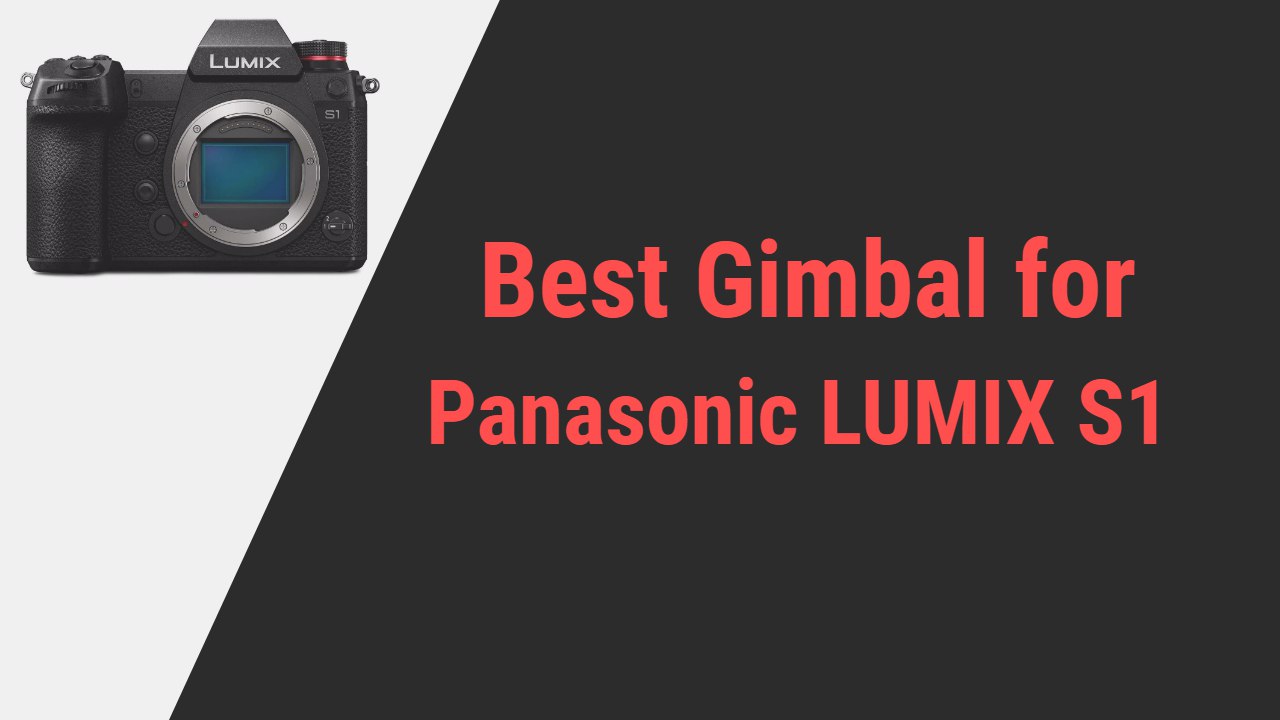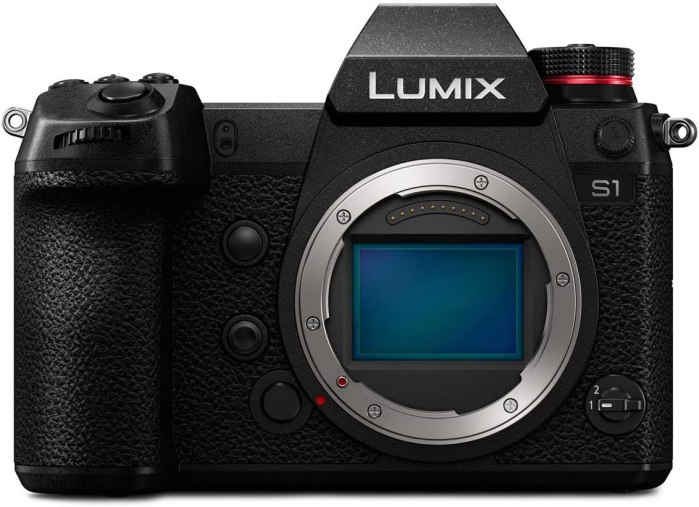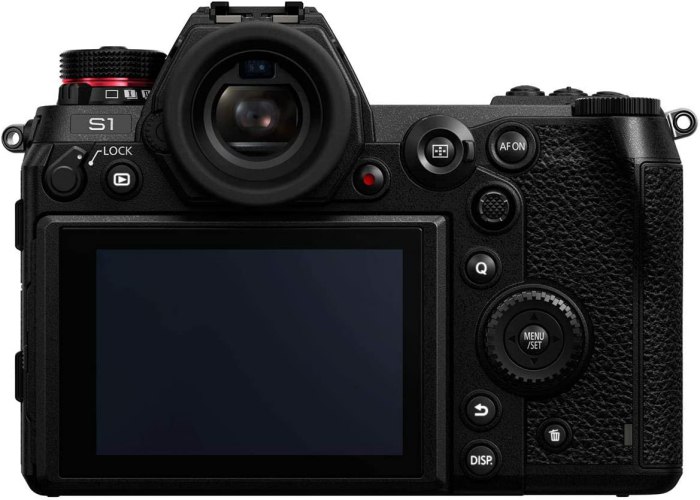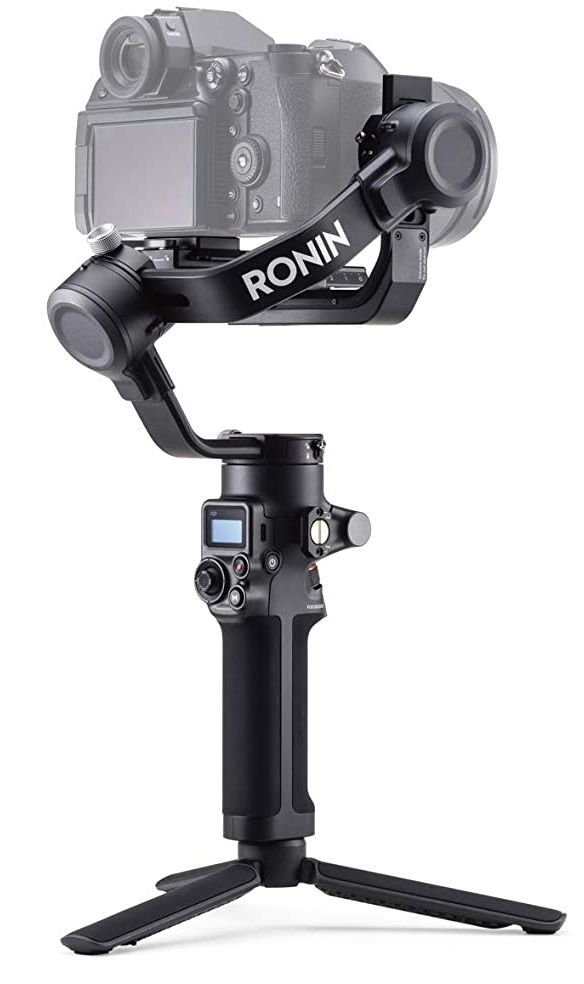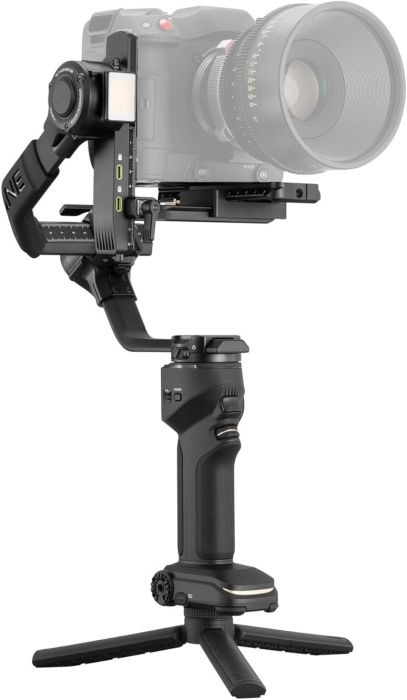Photography is an art, a delicate art that requires a few significant factors to master; stabilization is one of them. Quality stabilization over every shot means the right gimbal for my camera because if you are into this photography game, you must already know gimbal holds the immense power to transform each click into an uncharted art of cinematic wonder.
So, today, we will be talking about gimbals and their miraculous abilities and what they can do when merged with one of my favorite Panasonic Lumix S1 cameras.
The house of Panasonic has been serving us with the finest technological wonders and advanced cameras; Lumix S1 is one of them with unrivaled performance and potential.
Panasonic LUMIX S1
Note:
All the gimbals mentioned here are tested with Panasonic LUMIX S1 and work perfectly fine.
| DJI RS 3 (Best Overall)

|
| DJI RS 3 Pro (Most High-end - Highest Payload Capacity & Comes with Advanced Features)
     |
| DJI RSC 2 (Budget Pick)
     |
| Zhiyun Crane 4
     |
Moreover, the right gimbal by its side became the unsung hero that cooked up cinematic tales out of mere ordinary images.
So, I invite you all to join me on this fascinating journey of stability, where I will be unfolding some of the best gimbals for Panasonic Lumix S1 to spice up your daily photography.
Know your camera – Panasonic Lumix S1
Panasonic does have a history of producing advanced cameras; the Lumix S1 turns out to be one of them, with an incredibly versatile character in the world of full-frame mirrorless cameras.
The camera contains ravishing capabilities for both still photography and creative video performance. Sporting the unique 24.2 Megapixel resolution sensor and the high-graded upgraded Venus Engine processor, the camera promises to deliver remarkable image quality, capturing the richest details and vibrant colors.
When it comes to the video recording department, Lumix S1 does best and supports 4k video recording at up to 60 frames per second speed, making way for cinema-grade video production.
The advanced dual built-in image stabilization system complements video production to ensure the footage remains steady in different shooting scenarios.
In addition, the indulgence of a high-speed and precision autofocus system with excellent low-light imaging quality is what makes the Lumix S1 shooting a standout, and that is only defined to be an excellent choice for both photographers and videographers.
Launched on 18 March 2019, Lumix S1 does have a durable, well-rounded body, with robust construction along with weather-sealed features reflecting the reliable commitment of Panasonic’s exquisite service, all at the price tag of $2499.
Best Gimbals for Panasonic S1
1. DJI RS 3
When I hear stabilization, there is one single brand that immediately comes to my mind: the great DJI. How could I ever resist using one of its finest creations with my Panasonic Lumix S1?
So, I picked the best-seller of the brand, the DJI RS 3 gimbal, an iconic stabilization with some jaw-dropping abilities to transform your picture into a masterpiece while requiring much effort.
Come let me narrate my good time with RS 3
Everything about RS 3 is impeccable, but let’s start with its primary functionality: stability. So, the gimbal is blessed with the upgraded third-generation RS Stabilization algorithm, one that guarantees 20% enhanced stability over the previous gimbal, enough to polish cinematic smoothness over dynamic and running shots.
Rest is taken care of by the super smooth mode, the one that benefits by increasing motor torque for added stability.
RS 3 is trained to mingle with high-end cameras, and thus, it is designed to have a decent about 6.6 pounds payload, which is, I believe, enough to carry Lumix S1 and its additional accessories.
However, the gimbal itself’s weight sticks to a minimum, falling through somewhere about 2.2 pounds, which makes it the most compact and light tool to carry on a travel escapade.
With the dual-layered quick-release plates, you can always do the whole mounting stuff quickly without needing to rebalance and stuff.
The automated axis lock inside makes sure to secure the axis lock while I explore all the angles and directions. The fine-tuning offered by RS 3 is a god-sent, at least for me, as it helps me position my camera correctly.
There are other creative things you can do with the RS 3; you can drive all your expertise in shooting different creative modes such as FPV, 3D Roll 360, Portrait, Lock, or intelligent motion function modes like timelapse, panorama, and hyper-lapse.
You can also do better in a selfie or vlogging yourself mode because this beauty supports a Ronin Image transmitter, one that allows you to transmit the live feed to your phone at 1080p.
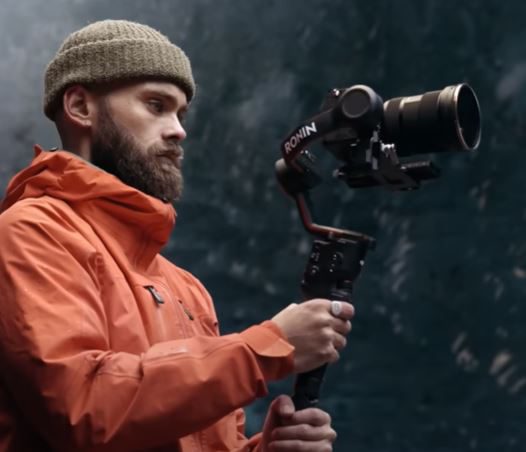

All these things might sound a little hectic to you, but trust me when I say this RS 3 is that gimbal known for its user-friendly service. The way it offers both physical control via joystick buttons and remote controlling vial DJI ronin application.
Then, the integrated 3000 lithium-ion polymer battery, one that allows an extended runtime of 12 hours on a single charge with 2.5 hours of recharging.
Reason for Recommendation
Honestly, I don’t think any gimbal would have been a better choice for Lumix S1 H; RS 3 is that ideal stabilizer with precision, quality stability, versatility, and, most importantly, effortless control and compatibility.
This easy control part makes it best for both a professional and a beginner; it doesn’t matter.
What I Like about DJI RS 3
- Effortless control
- Enhanced power support
- Creative intelligent function
- Upgraded stabilization
- Super Smooth Mode
- Larger display panel
What can be improved
- Not durable enough
- Pricer then alternatives
2. DJI RS 3 Pro
With the little taste of incredible amusement of RS 3, the greedy photographer inside me wanted more, which is why I moved on to another DJI masterpiece, an upgraded and high-graded one
Updating to none other than DJI RS 3 Pro. Of course, and boy! What a game-changer this video shooting has been with RS 3 Pro’s infinite versatility and Lumix S1H filmmaking setup
Here are some exciting features that helped me harness the power of my Lumix S1 in the most innovative way possible
As an upgrade of RS 3, there are a lot of improvements you will see with the first usage of RS 3 Pro, but let’s state the similarities. So, the tucking of Lumix S1 is the same as RS 3 with the dual-layered quick-release plate and the security with automated axis lock and fine-tuning.
Controlling the gimbal is almost the same; it’s just the upgraded interface difference you might notice. Other than that, you can just engage with physical (Joystick dials) and remote (DJI Ronin Application) control.
The 1.8-inch OLED panel backed up the controlling system of the gimbal. However, you get an opportunity to add all the accessories you want, as the RS 3 Pro comes with additional ports for accessories.
The build somewhere lies in between because you can expect the same high level of durability and strength to keep your precious gadget the same.
The only difference is the RS 3 Pro is composed of carbon fiber material, which makes it firm and lightweight. Rest the creative shooting modes, the image transmission at 1080p, and cinematic vision follow through.
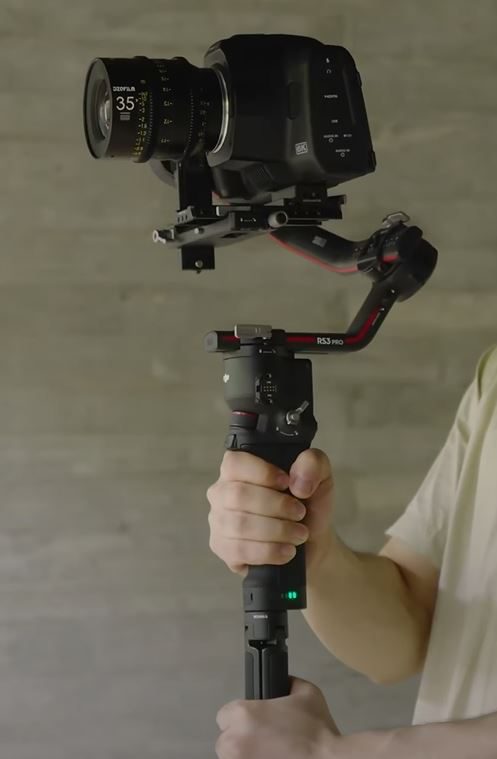

Now, RS 3 Pro is called a beast because it’s designed to hold more power than any other gimbal; this is justified by its ability to carry at most a 10-pound payload, which adds the Lumix S1 and its accessories.
Empowered by the same third-generation stabilization algorithm, you can expect 20% stability over shots with super smooth mode results.
What’s most unique about RS 3 Pro is its creative LiDAR focusing. With the standard support of Ronin 4D’s LiDAR focusing technology, you can now project any ranging point in a certain area to get a better vision of the focused subject.
Not just it, with the upgraded active track pro you can also keep an eye on the subject no matter where it goes.
The quality stabilization of RS 3 Pro is destined to work for an extensive scene as per the integrated DJI RS SDK protocol and longer, if I might add.
With the companionship of a lithium-ion battery charged with 1950 mAh, you can expect 12 hours of runtime with just 1.5 hours of recharging time; what a wonder!!
Reason for Recommendation
Well, nothing literally can define the amount of immense power the RS 3 Pro holds; I was left stunned by its dazzling ability to LiDAR focus or upgraded track or all the creative versatility that the world wasn’t expected to see in such a reasonable price budget.
Following the footsteps of its predecessor, it’s not very challenging to use either, so yeah, why not choose such a beast for Lumix S1.
What I Like about DJI RS 3 Pro
- Upgraded features
- Higher Payload
- LiDAR focus compatibility
- Added extensive ports
- Third-gen RS stabilization
- Active Track Pro
- Carbon Fiber durability
What can be improved
- Bulkier than other models
- Expensive
- Not suitable for beginners
3. DJI RSC 2
Well, it is said that no matter where you go, some past experiences are always meant to stay with you; I have had such a terrific cinematic experience with one of the gems of DJI it compelled me to use the gimbal with my Lumix S1 once again
Loved by countless professionals out there, I chose DJI RSC 2, a wonderfully compact, user-friendly, and pocket-friendly gimbal that lets you go deep into stabilization theory to improve image value
Here, let me break its ravishing potential all down in front of you
Like DJI’s other marvelous gems, RSC 2 does follow the same track of quality stabilization, and this comes from the upgraded DJI Titan stabilization algorithm, which makes sure your image doesn’t get corrupted by jerkiness.
The topping of super smooth stabilization sprinkles spices by adding more stability for telephoto lens shooting
You would be getting a whole new world of creativity with RSC 2. Lumix S1’s expertise can be shown in different ways, angles, and directions.
You can have expertise in shooting a timelapse, panorama, 360 roll, single-tap portrait mode, and several other functions. The DJI’s very special image transmission with the support of DJI RavenEye is something out of the box for a self-filming user.
Trained for the high-end camera, RSC 2 is the habitat of working with top mirrorless and DSLR cameras; this is because it can handle the maximum payload of 6.6 pounds with all the necessary accessories.
With the dual-layer manfrotto plus Arca Swiss mounting system, you don’t have to struggle a bit with balancing and setting the camera.
I believe RSC 2 does have one expertise in underslung mode, in easy words, shooting low-angle shots without needing to attach any briefcase handle or accessories.
Not needing doesn’t mean you can’t because RSC 2 comes with two additional ports for adding accessories of your choice.
The gimbal control is way too easy; you can work with either physical joystick dials or remotely via the DJI application. With the 1-inch OLED panel, you can always have the peak of its operation.
The built-in 3600 mAh lithium-ion battery of RSC is the power one that grants about 14 hours of filming on a single charge.
And the way RSC 2 is designed is super. Like I mentioned, the whole concept was comfortability, so the gimbal was designed with as much possible ergonomics.
The ultra-compact body of RSC 2 can be folded down for better storage as well as low-angle shots, and the 2.9-pound weight keeps the travel-friendly factor in favor.
Reason for Recommendation
The primary reason RSC 2 is my choice for Lumix S1 is because of its compact design, ergonomics, user-friendly approach, and, most importantly, reasonable pricing.
I mean, if you can get DJI’s level of stabilization expertise in an affordable price range, why would you ever want to resist? Period
What I Like about DJI RSC 2
- Extended battery runtime
- Ideal content creation
- Super Smooth stabilization
- Excellent compatibility
- DJI titan algorithm
- Effortless image transmission
- Compact and affordable
What can be improved
- Lack updated features
- Black and white display
4. ZHIYUN Crane 4
If you know a little about the gimbal world, you must know the fact that a gimbal is a weapon of comfort and creativity. Luckily, I found one of the best gimbals for the Panasonic Lumix S1 that strikes that perfect balance between performance and portability.
From the treasury of Zhiyun, presenting the latest Zhiyun Crane 4 three-axis gimbal, one that had impressed me on a whole different level with its stunning qualities and potential and has proven to be an affordable option for Lumix S1.
Here, let’s have a nice and deep peak at its vibrant functionalities
So, I am going to start with the mounting. In a word, setting up the gimbal has never been this easy. The brand put together the dual-layered quick-release plates so that we don’t get entangled between setups
So, all you have to do is slide and lock, and the rest is taken care of, saving you all trouble with efficient integration and balancing. Also, the gimbal has an auto-calibration feature you can use to check the camera positioning for safety.
The Crane 4 is designed with quite the aesthetic, much like one glimpse, and you don’t want to look away. The strong build exposes the durability factor, while the low weight of 3.6 pounds makes sure you don’t have a heavy weight on your arm.
There is an extended arm length associated with the gimbal design; this helps you get unique shots of tricky angles and corners. Even with its weight and durable build, the Crane 4 is designed to carry an advanced camera like the Lumix S1 with a decent payload capacity.
Thanks to the gimbal strongest motor and its effective algorithm, my video footage doesn’t have to face any jerky or blurry spots; the upgraded stabilization makes sure to sabotage all the unnecessary movement caught during dynamic shooting.
You can try any creative modes you like to explore, time-lapse, hyper-lapse, or panorama; the gimbal has expertise in all. Not just it, these creative shoots can be enhanced with the bright fill light feature of gimbal.
A built-in 10-watt fill light that can be adjusted helps with better lighting, accurate color, and detailing, improving the video.
You don’t have to engage in heavy settings in the name of controlling the gimbal; the customizable function trigger dials with all the basic settings and remote controlling via ZY play app add spice to the ordinary controlling of the gimbal.
The colored touchscreen panel, which is 1.22 inches long, adds charm to it by keeping you up to date.
Battery backup of the crane 4 is something you would love; the gimbal comes with four built-in batteries charged with 2600 mAh to grant 12 hours of stabilized filming on a single charge.
With the USB type C support, the gimbal can be recharged within just 1.5 hours.
Reason for Recommendation
Well, the level of innovation Crane 4 holds had me all on the hook. I certainly enjoyed playing with the ZY Play app way too much.
Gimbal’s follow focus mode, and the powerful fill light to enhance the quality of the footage are simply exquisite. Under such a budget-friendly price, the Crane 4 happens to be one of the best gimbal for Panasonic Lumix S1 camera.
What I Like about Zhiyun Crane 4
- Strongest battery backup
- ZY play efficiency
- Creative follow focus
- Intuitive user interface
- Creative shooting modes
- Auto Calibration
- Extended Arm length
What can be improved
- Not compatible with other cameras
- Gimbal weighs a little heavy
- No disclosure of payload
Mastering gimbal photography- Advance techniques for creative filmmaking with Lumix S1
Panasonic Lumix S1 does have some unexplainable powerful capabilities, potential that only a true cinematic tool can possess, but what a stunning piece of creation it became when paired with the ideal choice of the gimbal.
Know that transforming your photography skill does not always require advanced tools; sometimes, you need to learn how to harness that power and how to go deep in utilizing the full potential of this dynamic duo.
This is why I am here; here I am dropping some advanced techniques that will help you master gimbal photography and unlock creative possibilities along the way.
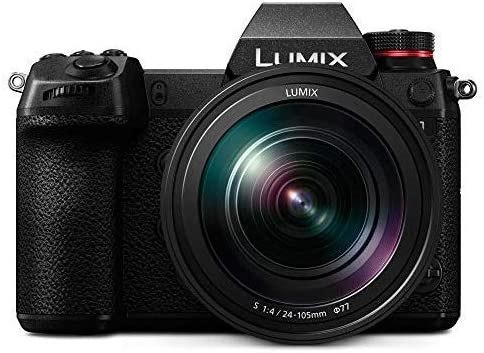

Gimbal Modes– First, dive into what’s already inside; explore various modes your gimbal has to offer; embrace multiple follows, inception mode, or other creative modes.
Manual control– Always prioritize manual control because it offers unparalleled control. Familiarize yourself with Lumix S1’s and Gimbal manual focus, white balance, and exposure control for cinematic touch.
Low-Light filming- Lumix S1 comes with impeccable low-light performance; take advantage because night shots have a tendency to offer more stability and creativity.
Creative angles – Carry your artistic vision up high and explore all the camera angles and perspectives; low-angle and high-angle shots are considered to create more audience.
Add accessories– You can always compliment your gimbal with additional accessories, such as an external lighting source, to create unique imagery and aesthetics of the scenes.
Transitions– Always experiment with dynamic movements or quick transitions between each shot; this will give a seamless transit effect while moving from one scene to another.
Dolly Zoom– One of the most popular, implements the cinematic technique dolly zoom, which includes zooming in and out while constantly moving the camera
Motion function– Always rely on creative intelligent motion function modes such as facilitating usage of the stunning timelapse scenes with different intervals and movements or hyper lapse exhibiting passage of time and other modes as well
Frequently Asked Questions (FAQs)
Q. Can I attach a gimbal to a tripod for additional stability?
Yes, indeed. You can attach your gimbal to a tripod for added stability; just make sure the one you are holding does come with a tripod mount.
Generally, all the gimbals do come with a standard ¼ inch threaded mounting hole on the bottom side of a gimbal, which is used to attach the tripod. This way, you can enhance stability for the stationary shot, fixating your camera at a position.
Tripods are a great way to provide a solid foundation that minimizes the potential vibration or movement. When combined with the impeccable ability of the gimbal, the footage you will be getting remains exceptionally professional and cinematic.
Q. What are the key considerations for choosing a gimbal for Panasonic Lumix S1 cameras?
Choosing a gimbal for your Panasonic Lumix S1 is one vital step you don’t want to take. There are certain crucial factors that need consideration, and only a thoughtful approach can lead you toward your ideal gimbal.
For instance, Confirm the gimbal’s payload so that you can accommodate Lumix S1 and its accessories. Determine the advanced stabilization so that you can explore smooth footage without jitter or shake.
Go for the durable build to determine the longevity whilst, most importantly, check the compatibility with Lumix S1. Other factors like creative modes, power runtime, and easy control might also come in handy.
Conclusion
So, as I approach the end of this outstanding guide through the world of best gimbal for Panasonic Lumix S1, How do you feel having the best interest in order?
Well, honestly, I can’t contain my excitement about the cinematic adventure that awaits you onwards. Do you know what creative miracles you can do having the ideal gimbal by your side?
You can sail through the ocean of artistry, letting your Lumix S1 see, perceive, and capture the scene in the most fascinating way possible. So, which of these gimbals had impressed you most?
Will it be the people’s choice and the brand’s best-seller DJI RS 3 with its exceptional control, or its upgraded beast DJI RS 3 Pro with its immense power, or will it be the compact and affordable DJI RSC 2?
Which of these has won you over, or are you going to just skip the DJI expertise and choose Zhiyun Crane 4 overall? I would be delighted to know which of these gimbals you will be choosing. Don’t forget to drop in a comment below.
Happy Filming!

